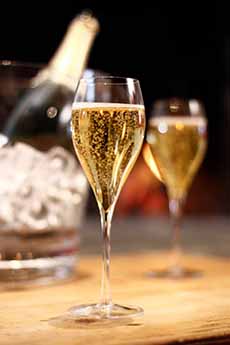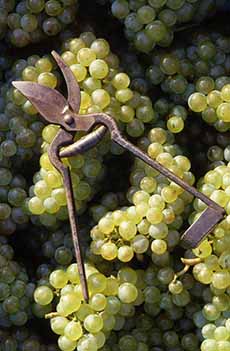April Is Earth Month, And Champagne Is Sustainable Wine
|
April is Earth Month and Earth Day April 22nd. As environmentally conscious people, we seek to “do something” new each year. In addition to working more sustainably in the kitchen, we look for food growers and manufacturers who have taken steps to lower their carbon footprint and/or take other sustainable actions. Wine drinkers can look to sustainable wine*, and there’s no better time to tell you about the sustainability efforts of the Champagne region of France. Champagne is golden in hue†, but the entire region has taken steps to sustainably produce its wines, making Champagne an option for those who aim to drink “greener.” Producers in Champagne are working to combat climate change. Below are some key sustainability initiatives from the Champagne region: Champagne was the first wine-growing region in the world to implement a carbon footprint assessment and identify the main sources of emissions. Since the region’s carbon footprint plan was enacted in 2003, the CO2 emissions generated by each bottle of Champagne have been cut by 20%. The Champagne region aims to achieve a 75% decrease by 2050. Champagne has worked with its regional partners to create an industrial ecology program for waste recycling and biomass conversion. Due to this, 90% of waste from the region is sorted and recycled, or used to recover energy, and 100% of winemaking sub-products are reused by various industries. Champagne has initiatives to become more environmentally friendly in the vineyard as well. Sixty-three percent of wine-growing areas in Champagne are now environmentally certified; with a goal of 100% certified by 2030. Champagne is working to be more sustainable by experimenting with new grape varietals. Some of the traditional varietals are susceptible to disease and rot or are otherwise fragile. Thus, the region is researching new techniques to combat the various forms of decline in the vineyard. This includes defining new soil maintenance protocols and implementing new oenological strategies to prepare for the effects of climate change. So, toast to Earth Month, Earth Day, and everyone who is taking small steps or large ones to help save our planet. Overall, environmental sustainability is the ability to maintain an ecological balance in our planet’s natural environment. The goal is to conserve natural resources to support the well-being of current and future generations. In terms of individual brands of wine, look for bottles that are organic, biodynamic, natural, and sustainable. > Here’s more about each of these. |
|
|
|
________________ *For everyday drinking, boxed wines are a lot more eco-friendly. They produce about half the carbon emissions that making a bottle does. †Colors range from pale gold to the warmer amber shade, and as the wines age, the colors darken. Rosé champagnes range from pale pink to deep rose. CHECK OUT WHAT’S HAPPENING ON OUR HOME PAGE, THENIBBLE.COM. |
||





